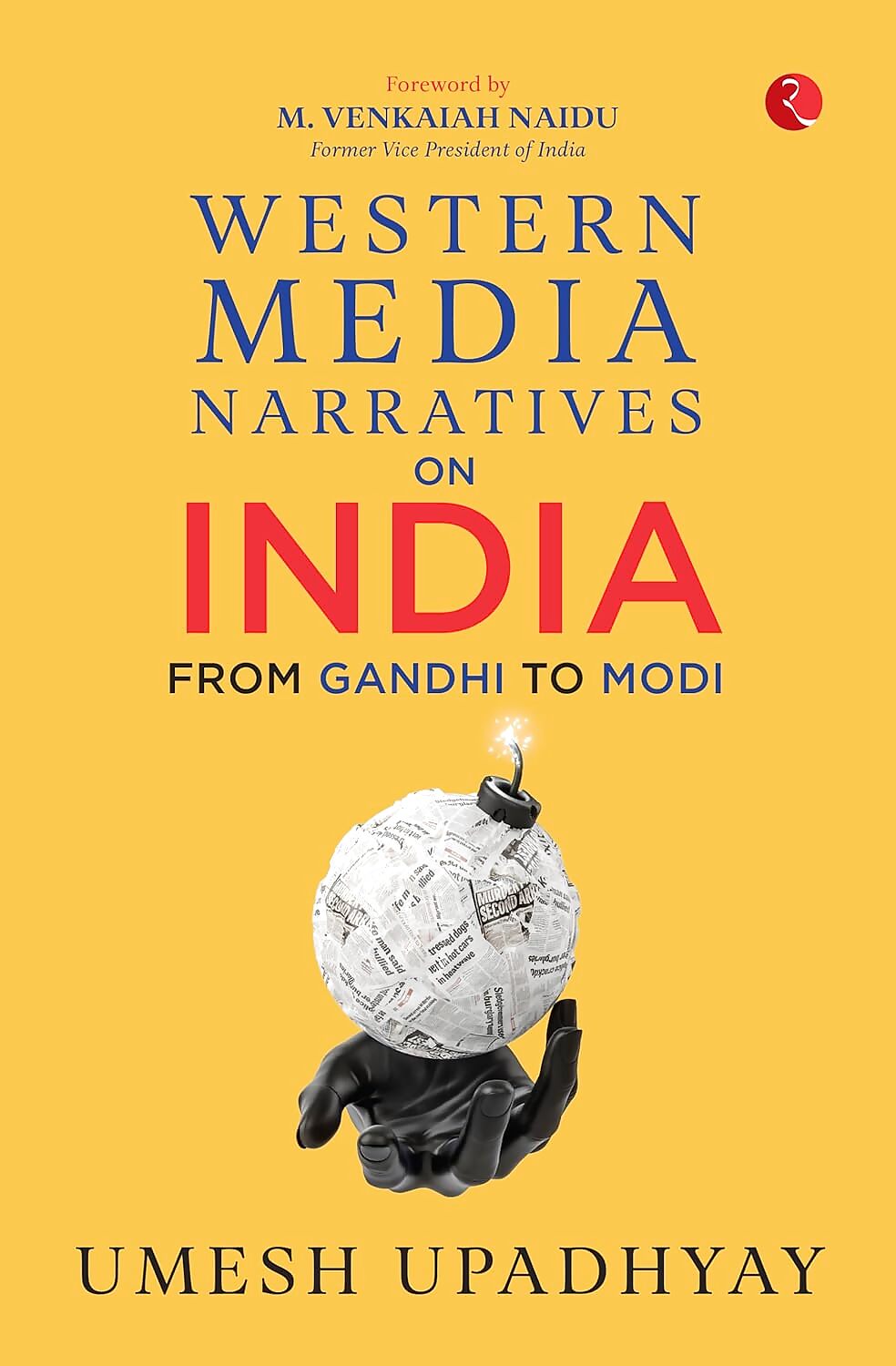
views
One thing that struck me while reading ‘Western Media Narratives on India: From Gandhi to Modi’ by Umesh Upadhyay was that he referenced only one Indian book, published in 2003, on Western reporting about India. All other references from India were news and magazine stories. This highlights that, despite a clear understanding that the West, through its media, is heavily biased against India, there have not been many serious studies on the Western media narrative about India. This was more surprising to me than the content of the book.
Why are our academicians and media schools not interested in understanding Western bias, despite knowing that these narratives can sometimes damage international relations, create a negative image of our own country and foster Indo-phobic sentiments in host countries? Why is there so little research, even though we have so many media schools? Is it because our predominantly left-leaning media and academia are not concerned about our country’s image, as they seem to profit from following the Western narrative to get published and be invited to their five-star seminars? Or is it because our non-left-leaning academicians and thinkers don’t take this malaise seriously, or are they simply lazy?

‘Western Media Narratives on India: From Gandhi to Modi’ by Umesh Upadhyay is thought-provoking, offering a well-structured study with a substantial number of references, especially considering the book’s size. It’s not like we don’t already know most of these stories. It’s that when you see these case studies laid out with piles of evidence, linking one to the next, you really start to understand how the West has been trying to hold India back – from Gandhi to Modi, just like the author says. By the end, there’s a clear pattern of putting India down so it never becomes ‘Bharat.’ The author gives examples from other countries too.
Basically, the West’s old colonial mindset can’t handle the changing realities of the world order, where a powerful country like India becomes a thorn in the eyes of the former colonialists who feel threatened by the rise of the assertive “natives”.
For me, two stories and a whole narrative built on negative stuff were the big takeaways. One story reveals that Gandhi and Sardar Patel retired to the quiet town of Pilani during the height of Partition-related violence. Another new addition to my knowledge was Dr Babasaheb Ambedkar’s attempts to overthrow Nehru. However, the real revelation was the story of how news agencies were born and used as tools of imperialism.
The big story of Covid and the defamation of India, the attempts to downplay its plan to develop its own vaccine and inoculate 1.4 billion people in record time – with the best possible record-keeping using bug-free software that ran seamlessly – being reduced to a non-achievement, enrages you. The poisonous efforts to sabotage India’s homegrown vaccine by refusing to recognise it, forcing MNC vaccines at a huge cost and with zero responsibility, disappoint you. People who lobbied for international vaccines felt ‘used’ by MNCs. We Indians have a soft corner for the West, let’s admit it.
However, after reading this section, with its meticulous research and detailed tables, you may find yourself shedding this blind admiration for the West—except perhaps for those who have made it their business to sell the West to India and undermine the country for their own selfish interests.
The author begins with the pre-independence contempt of the British, and the British press and their collaborators, during the period of the handover of the reign to us “natives” who were guaranteed to fail. He then shows us that whether it’s the “imperial” Indira Gandhi with her soft corner for the left, to whom she outsourced the intellectual narrative, or the down-to-earth Atal Bihari Vajpayee, the West does not differentiate. For them, their biases, which they can’t let go of, and their goal of keeping India down come first. Hence, news was either twisted, manufactured, or suppressed. Of course, later it became easier with our willing media nurtured by a colonial mindset.
The story of how India’s efforts to literally reach for the skies were ridiculed – by raising the false dilemma of poverty versus space research – is interesting. It reveals how the West wants us to toe their line by confusing the Indian mindset. The author establishes a much deeper meaning to this ridicule than simply portraying us as a nation of cowherds. Here again, our own intellectual class, using the elementary arguments of the West as a foundation, is not far behind. We know that space research has helped us plan our agriculture, monitor natural disasters and climate change, and utilise its by-products in the medical and technical fields. However, our leftists and poverty profiteers find it difficult to understand this.
The most delightful part of the book is its exploration of journalists becoming handmaidens of colonial powers and reaping huge profits from it. This reminds us that the inclination of our media figures to build personal assets in recent years, using their connections with governments, is not a new phenomenon but a classic idea reused by our wealthy, elite journalists.
The latter parts of the book make it an ideal textbook for media students. They analyse the West’s obsession with portraying India as a land of snake charmers incapable of technological leadership. The last chapter presents a compelling study of the colonisation of Indian minds and the need to decolonise them to help India truly become “Bharat.”
‘Western Media Narratives on India: From Gandhi to Modi’ is neither verbose nor voluminous. It is written in an easy-to-read, fast-paced style with ample references, making it possible for a focused reader to finish in about three hours. There are a few proofing issues, though not many, particularly in the initial pages. My main criticism concerns the book’s length. Having picked up a microscope and binoculars, and sifted through so much material, Umesh Upadhyay could have easily doubled the size without sacrificing readability. It could then have been a landmark book and a sought-after reference.
Even so, it’s already on its way to becoming a standard textbook for media schools and essential reading for any Indian who wants to study Western media from an Indian perspective. It will also help readers understand the reasons behind the behaviour of our Westernised media. The book will clarify many common confusions about the colonial mindset, the strange behaviour of the media, and why it took India so long to shift its mindset and march towards its destiny as Bharat. It also illuminates why this tryst with destiny, as envisioned by Swami Vivekananda and Maharshi Aurobindo, is still resisted by our elite intelligentsia.
The writer is a well-known author and political commentator. He has written several books on RSS like RSS 360, Sangh & Swaraj, RSS: Evolution from an Organisation to a Movement, Conflict Resolution: The RSS Way, and done a PhD on RSS. Views expressed in the above piece are personal and solely those of the author. They do not necessarily reflect News18’s views.
















Comments
0 comment